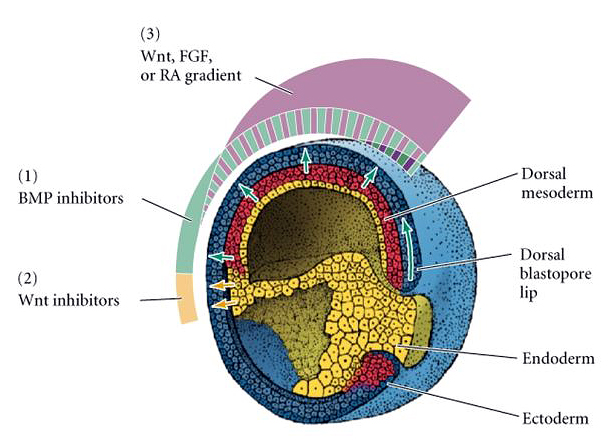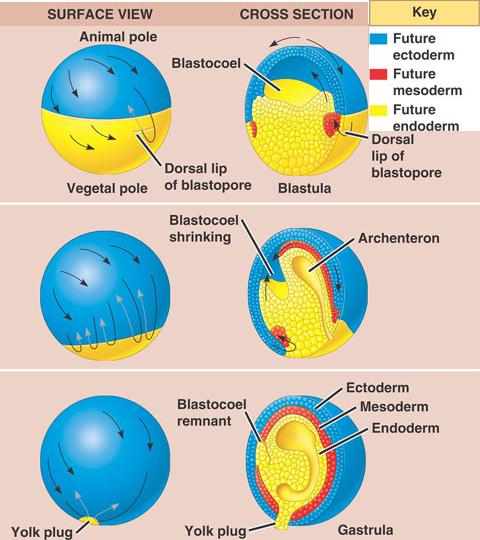

Blastopore laterla free#
We find statistically significant trends in key parameters that vary with initial size of the explant, e.g., for larger explants cell-ECM adhesion forces are weaker and free edge forces are stronger. The model is tightly integrated with quantitative image analysis of different sized embryonic tissue explants spreading on extracellular matrix (ECM) and is regulated by a small set of parameters including forces on the free edge, tissue stiffness, strength of cell-ECM adhesions, and active cell shape changes. Here, we demonstrate this method with a 2D Eulerian continuum mechanical model of spreading embryonic tissue. To overcome this limitation and enable efficient use of large datasets in a rigorous experimental design, we use the approximate Bayesian computation rejection algorithm to construct probability density distributions that estimate model parameters for a defined theoretical model and set of experimental data. However, these methods offer little information on the robustness of the fit and are generally ill-suited for statistical tests of multiple experiments. These datasets can be integrated with mathematical models to infer biomechanical properties of the system, typically identifying an optimal set of parameters for an individual experiment. In the step and ramp models (Models 2A & B) the main forces driving blastopore closure begin near the start of ventral involution (so ε≈0), and blastopore closure occurs at a fixed strain (ε = εC) however, the strain at tP varies with temperature.Īdvanced imaging techniques generate large datasets capable of describing the structure and kinematics of tissue spreading in embryonic development, wound healing, and the progression of many diseases. The generalized model (Model 1) assumes temperature only affects the speed of morphogenesis, therefore each morphogenetic event occurs at fixed, but unspecified strains (εP,εC,…). We approximate this deformation as uniform stretching of a strip of material (B). A strip of tissue (A, to right of each whole embryo schematic) experiences spatially and temporally varying stresses (open arrows stresses from deep tissues not shown), which elongate it and change its shape. In the step and ramp models (Models 2A & B) tP is used, as an estimate of the timing of cell behaviors that exert morphogenetic forces, to predict tC. In the generalized model (Model 1) we assumed all morphogenetic durations (tP, tC, etc) changed by the same proportion with temperature. Involution begins on the dorsal side at t = 0, and begins on the ventral side at tP the blastopore closes at tC.

The ectoderm and neurectoderm (gray) spreads over the embryo during gastrulation. Comprehensive analysis indicates that the L culture medium is the most optimal medium for mass production relatively.(A) Diagrams of blastopore closure from the lateral side. Considering the number of spores surviving from the process of the storage and multiple stress treatments per unit of mass media, the blastospores from L survived most. Nevertheless, the conidia had a higher germination rate than the blastospores during the storage process and multiple stress treatments. The spore yields, new generation conidial number, and nematode mortality rates of blastospores were higher than those of conidia. Yields, multiple stress tolerance, storage life, new generation conidial number, and PWN mortality rates of the spores were measured in each of these four media and compared. The agent was mass-produced using two kinds of culture media: S (50 % wheat bran and 50 % pine wood powder), L (0.5 g wheat bran and 0.5 g pinewood powder in 200 ml of potato dextrose broth), and two controls: SC (potato dextrose agar), LC (potato dextrose broth). vermicola produces blastospores in liquid media and aerial conidia on solid media. Esteya vermicola, an endoparasitic fungus of Bursaphelenchus xylophilus, the pinewood nematode (PWN), exhibits great potential as a biological control agent against this nematode.


 0 kommentar(er)
0 kommentar(er)
